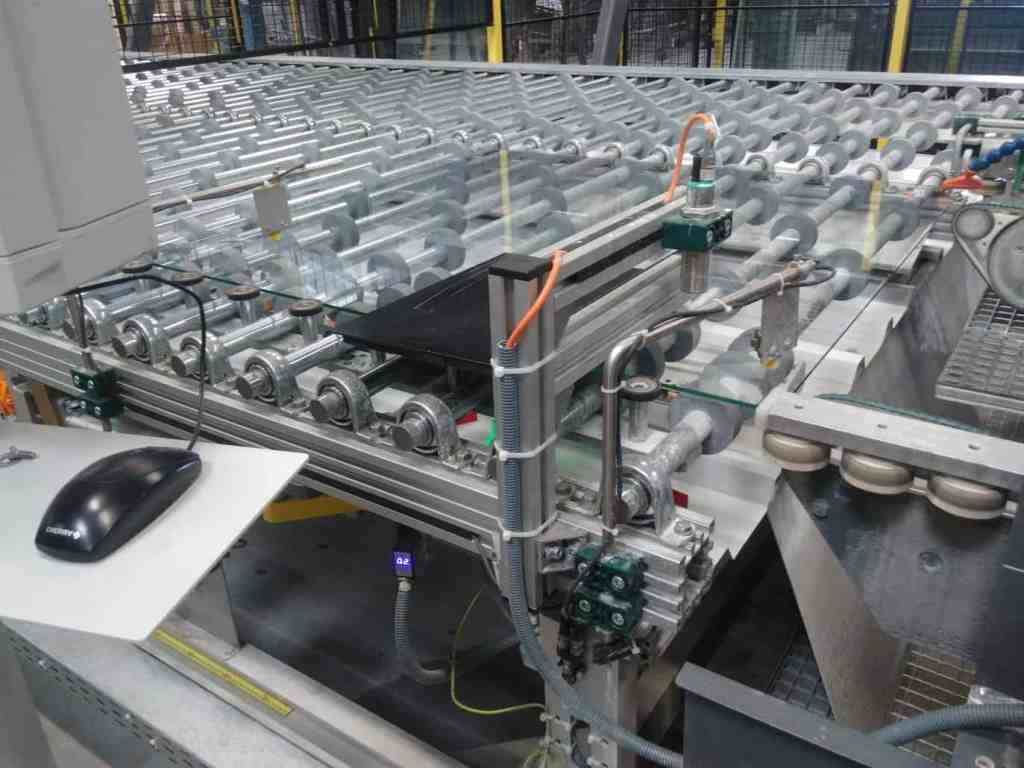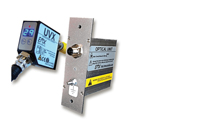|
The tin side of the glass is contaminated by the tin, and in industries where additional material is applied to the glass or glass pieces are fused, the air side is much better. In chemistry, for example, the air side of the glass is better for testing because there is little to no tin to contaminate the results. Painting must be done on the air side to avoid unexpected reactions, and scribing glass is always done on the air side because it breaks cleaner. However, the tin side of the glass also has its advantages, such as making certain coatings appear more colorful.
Which side is the right one depends on the application. However, the key is the method used to find out, and how to do it efficiently. The tin side of glass is not visible to the naked eye. It does, however, react when it comes into contact with ultraviolet (UV) light. While an employee could hold a handheld UV lamp up to the glass, it's not the most efficient way to do it - especially in today's high-speed manufacturing environments. To distinguish one side of the glass from the other, an automated tin-side glass sensor solution is needed.
Benefits of an Automated Tin Sensor
Implementing a tin sensor into the production environment eliminates many of the headaches and time-consuming processes that would otherwise be associated with manual efforts. For example, it first eliminates the need for human batch processing. Production workers have enough to do, and depending on the workflow and amount of material, they may not have time to repeatedly illuminate the glass material with handheld UV lamps to distinguish one side from the other. A tin-side glass sensor can be seamlessly integrated into factory processes and production lines in a very flexible and adaptable way, as we will explain in a moment.
While there are a variety of handheld sensors for tin-side glass, the primary focus of any production manager is uptime and overall production. Hand-held sensors not only slow down production because they contain a human element, but they also do not support secondary operations because they are not integrated into the production line. With a proper sensor integrated into a production line, companies can focus on other strategic and production needs while processes continue to run thanks to the response of the automated sensor.
Remember that the tin side of glass is not visible to the human eye. Since it must be detected with UV light, manual inspection by humans not only takes more time and resources, but also opens the door to potential quality issues. What is the degree or thickness of the tin side of the glass? It is not enough to check for the presence of tin. With a tin side glass sensor, no manual inspection is required. If a piece of glass has a tin layer that exceeds quality thresholds, the sensor - properly integrated - can be used to trigger a secondary operation, notify a production worker or initiate other alarm-related processes.
But what about the different types of glass? Clearly, different industries and product requirements call for different types of materials with unique characteristics. Some pieces are darker, thicker or have a higher reflectance. It is important that the tin side glass sensor can work with these variations.
Why the UVX Tin-Side Glass Sensor is the Right Choice
Designed, engineered and manufactured by EMX Industries, Inc. the UVX TIN-SIDE GLASS SENSOR offers companies a number of advantages. First, it features a numeric display and a learning mode that allows manufacturers to set specific parameters and thresholds for the glass they are working with. Its adjustable light source, ability to operate over a distance, and calibration capability make it easy to integrate into virtually any production environment.
The tin-sided UVX glass sensor is suitable for a wider range of glass types, making it the ideal choice for companies working with numerous materials. It is also easy to install, meaning companies can start using it immediately and reap its benefits in both production and balance sheet.
|




